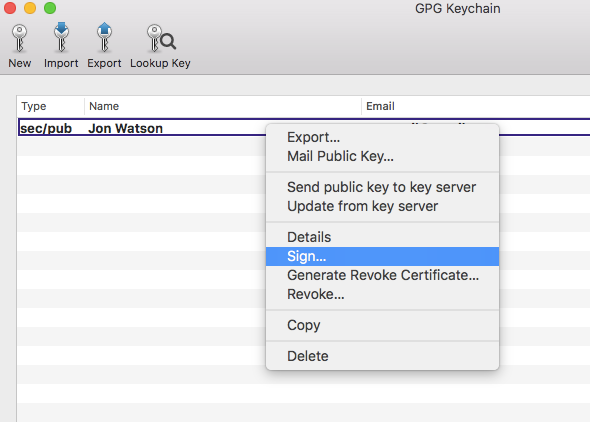

This guide is recommended for a specific use case, in which the user only uses Thunderbird as a tool for email encryption, while reading and sending unencrypted email through their webmail interface in a browser or through a different client. Access Now Helpline is at your service if you have any questions. For encrypting emails on Linux, click here. The password is protected with your macOS user password.Ĭhoose ‘Store in OS X Keychain’ option when the pinentry dialog asks for the password.Please consider the date when this article was last updated by looking at the bottom right corner of the page when evaluating the accuracy and security of the following guide.įor encrypting emails on Windows, click here. That means you will no longer see the pinentry dialog querying for your password. macOS will remember this password and automatically use it when needed. When you store a password in macOS keychain, pinentry, the program used to ask for your password, will never again ask for that password. > git config -global commit.gpgsign trueĪdd export GPG_TTY=$(tty) to. > git config -global user.signingkey B31AD9AD2B5CFABD # Prints the GPG key ID, in ASCII armor formatĬopy the GPG key, beginning with -BEGIN PGP PUBLIC KEY BLOCK- and ending with -END PGP PUBLIC KEY BLOCK. > gpg -list-secret-keys -keyid-format LONG This post records how to do so.Ĭhoose RSA and RSA for encryption method, 4096 for key size. So I need to make use of GPG Suite to sign commits automatically without being prompted for password from the terminal. JetBrains IDEs do not provide native supports/integrations for GPG. It worked fine using the following command line command: 1īut when I tried to sign commits within JetBrains IDEs, like Clion, things did not work out so easily. To make my commits marked as “verified” on GitHub, I tried to sign them locally using GPG.


 0 kommentar(er)
0 kommentar(er)
